Asilomar Conference on Recombinant DNA
description: academic conference held in 1975
48 results
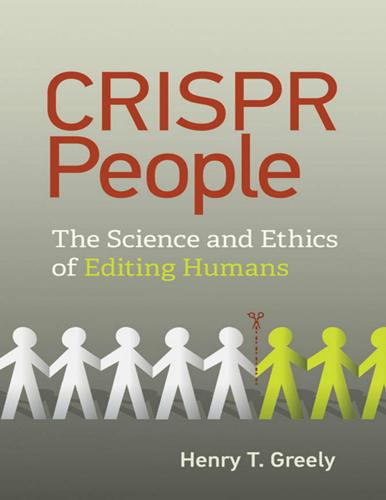
CRISPR People: The Science and Ethics of Editing Humans
by
Henry T. Greely
Published 22 Jan 2021
As far as Berg’s Nobel Prize goes, no one doubts that he and his lab made major contributions to the field and were driving forces in its advance, but Berg had another role that made him stand out from the rest of the recombinant DNA crowd. He was a leader, arguably the leader, in organizing a temporary moratorium on recombinant DNA research and in organizing and running the famous 1975 Asilomar Conference on recombinant DNA at which the moratorium was discussed. And the Asilomar Conference is an essential part of this story. The Asilomar Conference, or, to give it its full name, the Asilomar Conference on Recombinant DNA Molecules, was held on February 24, 25, and 26, 1975, at the Asilomar State Beach and Conference Grounds, an unusual unit of the California State Park system, located on the coast just south of Monterey, California (and one of the loveliest places in the world).7 It had been spawned in June 1973 at a Gordon Conference on the topic of nucleic acids.
…
Greely, “Human Genomics Research: New Challenges for Research Ethics,” Perspectives in Biology and Medicine 44, no. 2: 221–229 (spring 2001). If you ever get the chance, go. It is gorgeous and peaceful. 15. Paul Berg, David Baltimore, Sydney Brenner, et al., “Summary Statement of the Asilomar Conference on Recombinant DNA Molecules” Proceedings of the National Academy of Sciences 72, no. 6 (June 1975): 1981–1984. 16. Capron and Shapiro, “Remember Asilomar.” Some have speculated that the journalists were included as a consequence of the Watergate scandal of the previous year and other examples of secret decision-making.
…
Index Advisory Committee on Developing Global Standards for Governance and Oversight of Human Genome Editing, WHO, 189–190 registry, 189–190 American Society for Reproductive Medicine (ASRM), 266–267 Annas, George, 162 Archaea, 37, 39 Asilomar. See Asilomar Conference Asilomar Conference, 49, 53, 56–59 parallels with CRISPR discussion, 61–62, 65–66 Asilomar Conference Grounds, 57–58 Atlantic, The, 110, 157 Autosomal dominant, 226–227. See also Autosomal recessive; Mendelian genetics and gene therapies, 230–231 Autosomal recessive, 226–227, 239, 273–275, 282. See also Autosomal dominant; Mendelian genetics and gene therapies, 230–231, 237, 273–275 Bacteria, 9, 33–34, 37–39, 41, 44–45, 52, 139, 210–211 Bai, Chunli, 113 Baihualin China League, 14 Baltimore, David, 55–57, 61–62, 65–67 biography, 56–57 chair of International Summit on Human Gene Editing organizing committee, 66–67, 102, 106, 127, 181 Barrangou, Rodolphe, 96 Baylis, Françoise, 67 Begley, Sharon, 10–11, 46 Belluck, Pam, 124 Berg, Paul, 50–53, 55, 57, 60–62, 65–67, 186 biography, 50–51 ß-globin, 9.
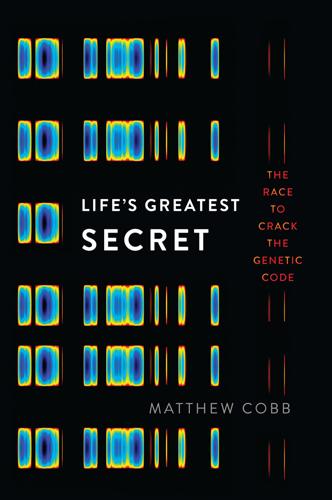
Life's Greatest Secret: The Race to Crack the Genetic Code
by
Matthew Cobb
Published 6 Jul 2015
However, a great deal of further work will be needed before this approach can be applied in the real world, and I suspect few scientists – or readers – would want to rely solely on this technique to ensure biosecurity.52 These responsible approaches to the potential impact of a new technique of unprecedented power are a direct descendant of the Asilomar conference on recombinant DNA that so successfully guided science as it was catapulted into the new world of genetic manipulation. In 2008, Paul Berg reflected on the impact of the Asilomar conference: In the 33 years since Asilomar, researchers around the world have carried out countless experiments with recombinant DNA without reported incident. Many of these experiments were inconceivable in 1975, yet as far as we know, none has been a hazard to public health.
…
Berg, P. and Singer, M., George Beadle, an Uncommon Farmer: The Emergence of Genetics in the Twentieth Century, Cold Spring Harbor, Cold Spring Harbor Laboratory Press, 2003. Berg, P., Baltimore, D., Boyer, H. W. et al., ‘Potential biohazards of recombinant DNA molecules’, Science, vol. 185, 1974, p. 303. Berg, P., Baltimore, D., Brenner, S. et al., ‘Asilomar conference on recombinant DNA molecules’, Science, vol. 188, 1975, pp. 991–4. Berget, S. M., Moore, C. and Sharp, P. A., ‘Spliced segments at the 5′ terminus of adenovirus 2 late mRNA’, Proceedings of the National Academy of Sciences USA, vol. 74, 1977, pp. 3171–5. Bergstrom, C. T. and Rosvall, M., ‘The transmission sense of information’, Biology and Philosophy, vol. 26, 2011a, pp. 159–76.
…
Exchange of letters between Seymour Benzer and François Jacob, André Lwoff and Jacques Monod, on the occasion of the French trio being awarded the Nobel Prize, in 1965. Benzer was renowned for his sense of humour. 29. Banner put up in Marshall Nirenberg’s laboratory at the National Institutes of Health in Bethesda, Maryland, when news came through of his 1969 Nobel Prize. 30. Asilomar conference on recombinant DNA, 1975. Left to right: Maxine Singer, Norton Zinder, Sydney Brenner and Paul Berg. The possibility of using CRISPR to change the human germ line has recently led to calls for a ‘new Asilomar’ to debate the ethical and technical questions involved. NOTES Chapter 1 1.Wood and Orel (2001), p. 258; see also Cobb (2006a), Poczai et al. (2014). 2.López-Beltrán (1994), Müller-Wille and Rheinberger (2007, 2012). 3.Harvey basically shrugged his shoulders and gave up (Cobb, 2006b). 4.Cobb (2006a). 5.For Mendel’s work and its implications, see Bowler (1989), Gayon (1998), Hartl and Orel (1992).

Whole Earth Discipline: An Ecopragmatist Manifesto
by
Stewart Brand
Published 15 Mar 2009
Monstrous organisms would be created, environmentalists said, that could threaten everything living. There would be insulin-shock epidemics and tumor plagues. The Cambridge and Berkeley city councils—both cities the home of major universities—outlawed recombinant-DNA research. The U.S. Congress began introducing restrictive legislation. That was the atmosphere that led to the Asilomar Conference on Recombinant DNA Molecules in California in February 1975. Coming from all over the world, some 146 genetic scientists and related professionals convened for four days to regulate their research. They instituted an array of laboratory containment practices and mandated the use of organisms that could not live outside the lab.
…
Ambio Amboseli National Park American Chestnut (Freinkel) American Chestnut Foundation America Needs Indians America’s Ancient Forests (Bonnicksen) Ames, Bruce Ammann, Klaus Anastas, Paul Anderson, Kat Anderson, Rip Andreae, Meinrat Angel, Roger Archer, David Arctic Arctic Marine Council Argentina Asia genetic engineering and Green Revolution and urbanization and see also specific countries Asian Development Bank Asilomar Conference on Recombinant DNA Molecules Association of Space Explorers asteroids Australia Ausubel, Jesse autocatalytic technologies automobiles background radiation bacteria gene transfer and human body and seawater and Baer, José Baer, Steve Bailey, Ronald Baker, Robert Baldwin, J. Bali Bangladesh Banyacya, Thomas Barcode of Life Baskin, Yvonne bats Bay Conservation and Development Commission bears beavers Bechman, Roland Beebe, Spencer Belarus Benedict XIV, Pope Benford, Gregory Benyus, Janine Berlin, Isaiah beta-carotene Betts, Richard Beyer, Peter Bezdek, Roger H.
…
I am totally agreed that the public should participate in any process where they can be given facts to think about. But the tradition is, you don’t call fire until you see it. Watson was right, it turned out. The authoritative book on the history of molecular biology is Horace Judson’s The Eighth Day of Creation (1996). A year after the Asilomar conference, Judson reports, “scientists’ fears were receding fast. All the biologists who had signed the original appeal for the moratorium and the conference now agreed that the dangers had been exaggerated and the practical effects pernicious. Over two decades, the guidelines have been progressively relaxed.”
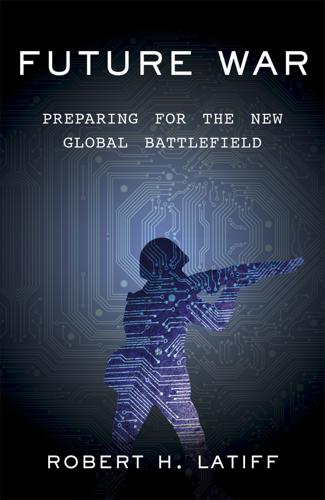
Future War: Preparing for the New Global Battlefield
by
Robert H. Latiff
Published 25 Sep 2017
Since World War II, numerous efforts have been made to deal with issues of technology, weapons research, and ethics. These include the 1946 Nuremberg trials, the 1972 Biological Weapons Convention, the 1993 Chemical Weapons Convention, and efforts by scientists to place restrictions on biomedical, genomic, and nanotechnology research. Scientists attending the Asilomar Conference on Recombinant DNA, near Monterey, California, in 1975 recognized the potential dangers of such DNA research and declared a moratorium until safe and ethical procedures could be developed. The guidelines developed were voluntary, but have been assiduously followed. Rules and theory are one thing, practical applications another.
…
The rules of war first found expression: Latiff and Howard, Ethical, Legal, and Societal Implications of New Weapons Technologies. Lincoln’s War Department was deeply concerned: Paul Finkelman, “Francis Lieber and the Modern Law of War” (reviewing John Fabian Witt, Lincoln’s Code: The Laws of War in American History), University of Chicago Law Review 80, no. 4 (September 2013): 2071–132. Scientists attending the Asilomar Conference: Paul Berg, “Meetings That Changed the World: Asilomar 1975: DNA Modification Secured,” Nature 455 (September 2008): 290–91. The medieval code of chivalry included: Richard Abels, “Medieval Chivalry,” United States Naval Academy, http://www.usna.edu/Users/history/abels/hh315/Chivalry.htm.

The Singularity Is Nearer: When We Merge with AI
by
Ray Kurzweil
Published 25 Jun 2024
See superintelligent AI symbolic computing, 14–19, 40 thought-to-text technology, 70–71 3D printing, 184 Turing test, 8–9, 12–13, 63–69 use of term, 13 vertical agriculture, 181–83 Asia, poverty, 138, 141 Asilomar Conference on Beneficial AI, 280, 282–83 Asilomar Conference on Recombinant DNA, 271–72 ASIMO, 101 Askell, Amanda, 48 assembly lines, 203, 204 associative memories, 38 asteroids, 34 Atari, 42 atherosclerosis, 134, 262 Atlas (robot), 101 ATMs, 209 atomic weapons.
…
No one would have preexisting immunity, and the result would be a pandemic capable of ravaging the human population.[26] The 2019–2023 coronavirus pandemic offers us a pale glimpse of what such a catastrophe could be like. The specter of this possibility was the impetus for the original Asilomar Conference on Recombinant DNA in 1975, fifteen years before the Human Genome Project was initiated.[27] It drew up a set of standards to prevent accidental problems and to guard against intentional ones. These “Asilomar guidelines” have been continually updated, and some of their principles are now baked into legal regulations governing the biotechnology industry.[28] There have also been efforts to create a rapid response system to counteract a suddenly emerging biological virus, whether released accidentally or intentionally.[29] Before COVID-19, perhaps the most notable effort to improve epidemic reaction times was the US government’s June 2015 establishment of the Global Rapid Response Team at the Centers for Disease Control.
…
Daniel Bressler and Chris Bakerlee, “ ‘Designer Bugs’: How the Next Pandemic Might Come from a Lab,” Vox, December 6, 2018, https://www.vox.com/future-perfect/2018/12/6/18127430/superbugs-biotech-pathogens-biorisk-pandemic. BACK TO NOTE REFERENCE 26 For a more in-depth case study on the Asilomar Conference and the principles it produced, see M. J. Peterson, “Asilomar Conference on Laboratory Precautions When Conducting Recombinant DNA Research—Case Summary,” International Dimensions of Ethics Education in Science and Engineering Case Study Series, June 2010, https://scholarworks.umass.edu/cgi/viewcontent.cgi?article=1023&context=edethicsinscience.
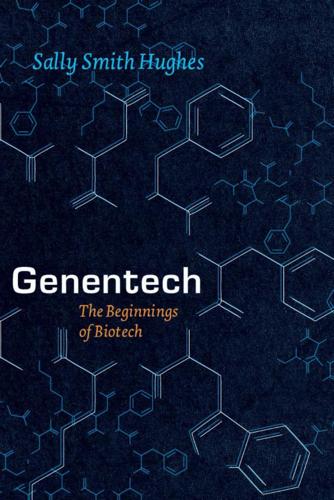
Genentech: The Beginnings of Biotech
by
Sally Smith Hughes
Recombinant DNA felt to him “like important stuff,” important enough to build a company upon.21 His seven years in venture capital had provided valuable training in raising money and advising new companies, but the experience had also made him feel “like a coach on the sidelines.”22 He wanted a piece of the action; he wanted a company of his own. Culling names from publicity on the 1975 Asilomar conference on recombinant DNA, he drew up a list of scientists prominent in the field. Swanson began to cold-call the scientists, asking if they thought the technology was ready to commercialize. Without exception, all believed recombinant DNA had industrial promise but surmised it would require a decade or two of development before a commercial payoff.23 Persisting despite the rebuffs, Swanson called Boyer, oblivious of the fact that he was contacting an inventor of the technology.
…
The Federal Register announced in November the formation of the Recombinant DNA Advisory Committee, with a mandate to advise the NIH director on technical matters related to recombinant DNA research.74 In February 1975 a select group of about a hundred molecular biologists arrived at the now-celebrated Conference on Recombinant DNA Molecules at California’s Asilomar conference grounds to consider the technical issue of laboratory research safety, explicitly avoiding deliberation on the technology’s larger social and ethical implications. Striving to avoid government regulation, the scientists proposed to devise their own safety regulations with the idea that recombinant DNA research could then proceed.
…
Cohen refused to endorse what he saw as a politically motivated document that he and much of the assembly had not reviewed. The conference in his opinion had turned into “a scientific witch hunt” that gave him heartburn and lingering anxiety.75 Even the more sanguine Boyer was under duress, disturbed by the in-fighting and politicking. He later labeled the Asilomar conference “a nightmare” and admitted he was too upset to sleep.76 The Stanford-UC effort to patent the Cohen-Boyer procedure was swept into the swirling political debate over the safety of recombinant DNA research, complicating the patenting process and prompting Cohen’s tense vigilance in matters related to DNA politics.
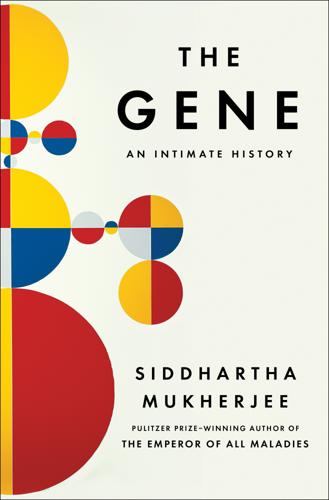
The Gene: An Intimate History
by
Siddhartha Mukherjee
Published 16 May 2016
abortion prenatal tests and, 267–68, 269, 269n, 273 Roe case on, 268–69 shifting attitudes toward, 269–70, 272 acquired immunodeficiency syndrome (AIDS), 247, 248, 249, 375 ADA deficiency, 423, 424 ADA gene mutations, 422–24 Adam Agassiz’s race theories on, 331 as First Parent, 25 Adams, Mark, 316 ADCY5 gene, in humans, 451 addiction, genetic components of, 300, 301 adenine, 135, 155–56 adenosine metabolism, 423–24 adenovirus, as gene-therapy vector, 430, 431–32, 434, 435, 465 adoption inheritance patterns in genetic diseases involving, 300 intelligence of transracial adoptees in, 348 as option for carrier couples in genetic disorders, 291 studies of twins reared apart after, 374, 381, 383, 487 Advisory Committee on Uranium, 232 Aeschylus, 21 Agassiz, Louis, 331–32, 343 aging research, with transgenic mice, 421 AIDS, 247, 248, 249, 375 Aktion T4 program, Germany, 123–24 Albany, Prince Leopold, Duke of, 99 alcoholism eugenics on, 116 genetic components of, 301, 459 Alexandra, czarina of Russia, 98, 99, 100 Alice, Princess, 99 alleles Fisher’s mathematical research on combinations using, 104 Mendel’s experimentation on, 48–52 Morgan’s fruit-fly research on, 97 polymorphisms similar to, 280 Allfrey, Vincent, 400n Allis, David, 400, 400n alpha interferon, 251 Alu DNA sequence, 324 Alzheimer’s disease, 97, 316, 421 American Breeders’ Association, 77 American Journal of Human Genetics, 281 Amgen, 308 ammonia Miller’s “primordial soup” experiment using, 411 in ornithine transcarbamylase (OTC) deficiency, 429, 430, 431, 432 amniocentesis, 267, 269, 291 Anaxagoras, 356–57 Ancestral Law of Heredity, 68–69, 72 Anderson, William French, 424–27, 428, 430 anemia, 169–70 anthropology, 29–30, 124, 331, 335 antibodies, 224, 323, 423, 435 antipsychotic medicines, 1, 6 apes evolution and, 332 pairs of chromosomes of, 322 applied biology, in Nazi Germany, 119, 120 Are You Fit to Marry? (film), 85 Arendt, Hannah, 124 Arieti, Silvano, 442–43 Aristotle, 22–24, 27, 70, 142 Asilomar conference (Asilomar I, 1973), California, 226–27 Asilomar Conference on Recombinant DNA (Asilomar II, 1975), California influence of, 230, 231–32, 234–35 moratorium proposal of, 230, 477, 502 range of attendees at, 229, 238 recommendations of, 237, 425 restrictions on recombinant DNA from, 243, 243n sessions at, 229–31, 234, 236 Asperger, Hans, 449 association study, 385 atomic bomb, 11, 131, 232, 301, 475 atoms as basic unit, 9–10, 485 coining of word, 71 fundamental units of matter making up, 140 as organizing principle for modern physics, 12 Rutherford’s conceptual model of, 140 attention deficit disorder, 386, 491 Augustinians, Mendel’s life among, 17–18, 49 Auschwitz concentration camp, Germany, 129, 130, 137–38, 502 autism, 276 creativity in, 448, 449 epigenetics used to alter, 406 mismatch between genome and environment in, 265, 482 mutations in, 406, 444, 444n, 454, 503 autoimmune disease, 453 Avery, Oswald background and training of, 133 Griffith’s transformation experiment confirmed by, 133, 136–37 research on DNA as genetic information carrier by, 137, 139, 158, 183, 205, 259, 314, 502 bacteria defense system against invading viruses in, 470–73 drug-resistant, 228–29 gene exchange between, 112 genes turned on or off for metabolic changes in, 175–76, 176n, 307n, 392 genetic information exchanged between, 136 as model system for research, 259 twin studies of genetic variations in response to, 130 Bailey, J.
…
Asilomar II—one of the most unusual: Paul Berg et al., “Summary statement of the Asilomar Conference on recombinant DNA molecules,” Proceedings of the National Academy of Sciences 72, no. 6 (1975): 1981–84. “You fucked the plasmid group”: Crotty, Ahead of the Curve, 107. He was promptly accused of: Brenner, “The influence of the press.” “Some people got sick of it all”: Crotty, Ahead of the Curve, 108. “The new techniques, which permit”: Gottweis, Governing Molecules, 88. To mitigate the risks, the document: Berg et al., “Summary statement of the Asilomar Conference,” 1981–84. two-page letter written in August 1939: Albert Einstein, “Letter to Roosevelt, August 2, 1939,” Albert Einstein’s Letters to Franklin Delano Roosevelt, http://hypertextbook.com/eworld/einstein.shtml#first.
…
Berg’s assistant Marianne Dieckmann once recalled a student who had accidentally flecked some liquid onto the tip of a cigarette (it was not unusual, for that matter, to have half-lit cigarettes, smoldering in ashtrays, strewn across the lab). The student had just shrugged and continued to smoke, with the droplet of virus disintegrating into ash. The Asilomar conference produced an important book, Biohazards in Biological Research, but its larger conclusion was in the negative. As Berg described it, “What came out of it, frankly, was the recognition of how little we know.” Concerns about gene cloning were further inflamed in the summer of 1973 when Boyer and Cohen presented their experiments on bacterial gene hybrids at another conference.
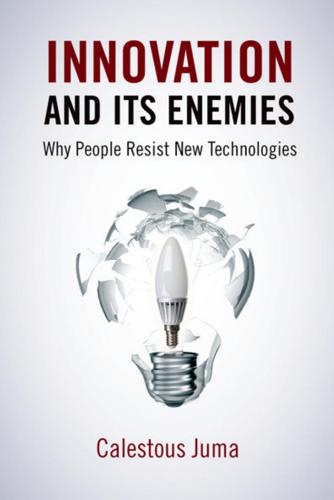
Innovation and Its Enemies
by
Calestous Juma
Published 20 Mar 2017
Questioning Science Regulatory uncertainties plagued genetic engineering from the beginning, but the scientific community self-regulated those concerns in many instances, understanding the potential dangers genetic engineering posed to the public and to science. Genetic engineering’s transformative power was evident from the time the gene-cloning technique was developed in 1973 by Herbert Boyer and Stanley Cohen. Two years later, participants at the 1975 Asilomar Conference on Recombinant DNA called for a voluntary moratorium on genetic engineering to allow the National Institutes of Health to develop safety guidelines for what some feared might be risky experiments. By being proactive, the scientific community took responsibility for designing safety guidelines that were themselves guided by the best available scientific knowledge and principles.
…
See Koran, printing of Arab Spring, 91 Archery, 15 Argentina Bt cotton in, 234 genetically edited crops regulation, 254 transgenic organisms, dispute over, 241 Armenians, as printers in Istanbul, 81–82 Al’Arraq, Muhammad ibn, 50 Arthur, W. Brian, 22, 319n5 Artificial ice industry, 197 Artificial intelligence, 13, 199, 281, 284 Artists, relationship with technology, 223 Asbestos, 31 Asia. See also specific countries agricultural systems in, 253 transgenic crops, response to, 251 Asilomar Conference on Recombinant DNA, 236 Assemblies, technology as collections of, 22–23 Associations. See names of specific organizations and associations Atatürk, Kemal, 89 Attaix (current-generating device manufacturer), 38–39 Attitudes, as barriers to technological innovation, 33, 36 Audiffren (refrigerator brand), 190 Audio recording system, magnetic, 41–42 Auerbach, Junius T., 186 Austin, Samuel, 176 Australia, genetically edited crops in, 234, 254 Authority, technological innovation and, 30–31, 71 Automation, 14, 281, 283–284.
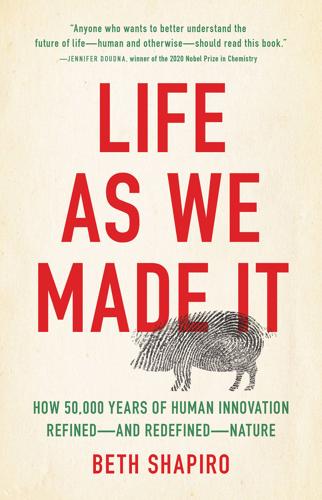
Life as We Made It: How 50,000 Years of Human Innovation Refined--And Redefined--Nature
by
Beth Shapiro
Published 15 Dec 2021
Plans to modify plants in South Africa to survive prolonged periods of drought are discussed by Lind (2017). Lewis (1992) coined the term “Frankenfoods.” References Afedraru L. 2018 October 30. Ugandan scientists poised to release vitamin-fortified GMO banana. Alliance for Science. Berg P, Baltimore D, Brenner S, Roblin RO, Singer MF. 1975. Summary statement of the Asilomar conference on recombinant DNA molecules. Proceedings of the National Academy of Sciences 72: 1981–1984. Butler D. 2012. Rat study sparks GM furore. Nature 489: 474. Carlson DF, Lancto CA, Zang B, Kim ES, Walton M, Oldeschulte D, Seabury C, Sonstegard TS, Fahrenkrug SC. 2016. Production of hornless dairy cattle from genome-edited cell lines.
…
Concerned members of the public lobbied their government representatives to stop the research. By the time the meeting took place, a clear line had already formed between those who wanted recombinant DNA research to succeed and those who wanted to ban it from happening at all. The meeting to decide the future of recombinant DNA technology was held in February 1975 at the Asilomar Conference grounds in Pacific Grove, California. Attendees included scientists, ethicists, and legal scholars. Most supported allowing recombinant DNA research to continue, but not without hesitation. They worried about what might happen if plant or animal genes were inserted into a bacterial genome. Could the new genes cause bacteria to make something toxic to plants or animals?
…
In the end, the assembled group agreed that the research had tremendous potential and should continue. They insisted, however, on strict safeguards and containment protocols for potential biohazards. Participants left the meeting feeling as if they’d paved a way forward for safe recombinant DNA research. The conclusions of the Asilomar Conference were reported in both the scientific and popular press. The scientists who participated were pleased with the consensus and believed the public would be as well. Not so. As before, anti-biotechnology activists exploited the risk-averse outcome of the meeting to further undermine public trust.

Human Compatible: Artificial Intelligence and the Problem of Control
by
Stuart Russell
Published 7 Oct 2019
Another claim that real AI researchers dismiss AI risks: David Kenny, “IBM’s open letter to Congress on artificial intelligence,” June 27, 2017, ibm.com/blogs/policy/kenny-artificial-intelligence-letter. 15. Report from the workshop that proposed voluntary restrictions on genetic engineering: Paul Berg et al., “Summary statement of the Asilomar Conference on Recombinant DNA Molecules,” Proceedings of the National Academy of Sciences 72 (1975): 1981–84. 16. Policy statement arising from the invention of CRISPR-Cas9 for gene editing: Organizing Committee for the International Summit on Human Gene Editing, “On human gene editing: International Summit statement,” December 3, 2015. 17.
…
This has led to a high-stakes race in which caution and careful engineering appear to be less important than snazzy demos, talent grabs, and premature rollouts. Thus, life-or-death economic competition provides an impetus to cut corners on safety in the hope of winning the race. In a 2008 retrospective paper on the 1975 Asilomar conference that he co-organized—the conference that led to a moratorium on genetic modification of humans—the biologist Paul Berg wrote,16 There is a lesson in Asilomar for all of science: the best way to respond to concerns created by emerging knowledge or early-stage technologies is for scientists from publicly funded institutions to find common cause with the wider public about the best way to regulate—as early as possible.
…
For an example of the kind of mathematical analysis that may be needed, see Avrim Blum, Lisa Hellerstein, and Nick Littlestone, “Learning in the presence of finitely or infinitely many irrelevant attributes,” Journal of Computer and System Sciences 50 (1995): 32–40. Also Lori Dalton, “Optimal Bayesian feature selection,” in Proceedings of the 2013 IEEE Global Conference on Signal and Information Processing, ed. Charles Bouman, Robert Nowak, and Anna Scaglione (IEEE, 2013). 19. Here I am rephrasing slightly a question by Moshe Vardi at the Asilomar Conference on Beneficial AI, 2017. 20. Michael Wellman and Jon Doyle, “Preferential semantics for goals,” in Proceedings of the 9th National Conference on Artificial Intelligence (AAAI Press, 1991). This paper draws on a much earlier proposal by Georg von Wright, “The logic of preference reconsidered,” Theory and Decision 3 (1972): 140–67. 21.
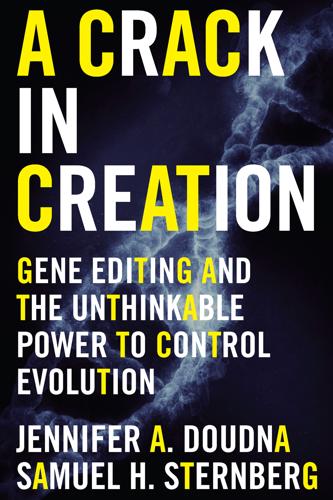
A Crack in Creation: Gene Editing and the Unthinkable Power to Control Evolution
by
Jennifer A. Doudna
and
Samuel H. Sternberg
Published 15 Mar 2017
Rogers, Biohazard (New York: Knopf, 1977); P. Berg and M. F. Singer, “The Recombinant DNA Controversy: Twenty Years Later,” Proceedings of the National Academy of Sciences of the United States of America 92 (1995): 9011–13. Berg and his colleagues decided that most experiments should proceed: P. Berg et al., “Asilomar Conference on Recombinant DNA Molecules,” Science188 (1975): 991–94. gave rise to a consensus that allowed research to proceed with popular support: P. Berg, “Meetings That Changed the World: Asilomar 1975: DNA Modification Secured,” Nature 455 (2008): 290–91. the meeting failed to cast a wide enough net outside the scientific community: “After Asilomar,” Nature 526 (2015): 293–94.
…
Moreover, because the SV40 virus was known to cause tumors in mice, there was a chance that the fragment of SV40 DNA could create a novel carcinogenic pathogen that, if released into the environment, might wreak havoc by spreading cancer-causing genes or antibiotic resistance to humans or some other species. Because of these concerns, Berg and his team of researchers held off on attempting the experiment. Instead, Berg called for the first of what would eventually become two meetings held in the picturesque Asilomar Conference Grounds, nestled in Pacific Grove, California, on the western tip of the Monterey Peninsula. Before his research went any further, he wanted to enlist his fellow scientists to run a thorough cost-benefit analysis. The meeting in 1973—eventually known as Asilomar I—focused on the DNA of cancer viruses and the risks they posed; it did not directly address the new recombinant DNA experiments Berg was considering.
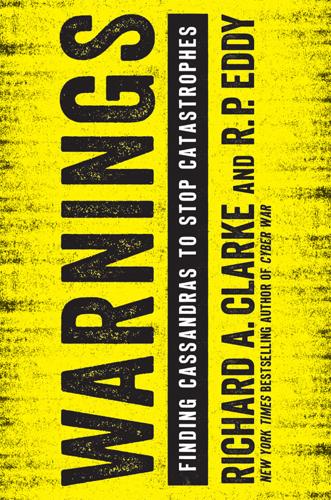
Warnings
by
Richard A. Clarke
Published 10 Apr 2017
The Paul Berg Papers: Recombinant DNA Technologies and Researchers’ Responsibilities, 1973–1980, Profiles in Science, National Library of Medicine, National Institutes of Health, https://profiles.nlm.nih.gov/ps/retrieve/Narrative/CD/p-nid/260 (accessed Oct. 11, 2016). 17. Paul Berg, David Baltimore, et al., “Summary Statement of the Asilomar Conference on Recombinant DNA Molecules,” Proceedings of the National Academy of Sciences of the United States of America 72, no. 6 (June 1975): 1981–84. 18. Interview with Paul Berg, June 6, 2016. 19. David Baltimore, Paul Berg, et al., “A Prudent Path Forward for Genomic Engineering and Germline Gene Modification,” Science 348, no. 6230 (Apr. 3, 2015): 36–38. 20.
…
THE MOTHER OF CRISPR BECOMES ITS CASSANDRA As the group of biologists gathered in Napa, California, in late January 2015, several couldn’t help but recognize the similarities to a conference that had taken place almost exactly forty years earlier. In February 1975, about 150 leading professionals gathered at the Asilomar Conference Grounds that overlooks the Pacific Ocean on California’s Monterey Peninsula. The meeting had been called to discuss a recent breakthrough discovery that allowed scientists to artificially manipulate the genome. Those in attendance were mostly molecular biologists, but the broad implications and wide-ranging discussions also brought physicians, lawyers, journalists, and government policy makers to Asilomar.14 The topic of discussion was recombinant DNA technology.
…
The journalists took part in all of the discussions, asked questions of the panelists, joined in for late-night beer drinking and debating with the scientists and bioethicists, and were given the freedom to write about the conference as they saw fit. The articles were detailed and dense, including a feature in Rolling Stone, recounting the debates, the arguing, bickering, and the ultimate consensus. The result, Dr. Berg recalled, was that “the public concern just fell off.”18 Many credit these successes to the Asilomar Conference’s timing: standards could be set and broad consensus could be reached because scientists involved in the technology’s conception called for an early, comprehensive, and public discussion. Had they waited longer, they would have been trying to forge new rules amid myriad different procedures among labs throughout the world.
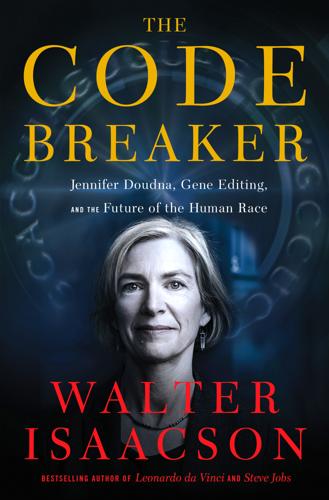
The Code Breaker: Jennifer Doudna, Gene Editing, and the Future of the Human Race
by
Walter Isaacson
Published 9 Mar 2021
Fredrickson, “Asilomar and Recombinant DNA: The End of the Beginning,” in Biomedical Politics (National Academies Press, 1991); Richard Hindmarsh and Herbert Gottweis, “Recombinant Regulation: The Asilomar Legacy 30 Years On,” Science as Culture, Fall 2005; Daniel Gregorowius, Nikola Biller-Andorno, and Anna Deplazes-Zemp, “The Role of Scientific Self-Regulation for the Control of Genome Editing in the Human Germline,” EMBO Reports, Feb. 20, 2017; Jim Kozubek, Modern Prometheus (Cambridge, 2016), 124. 9. Author’s interviews with James Watson and David Baltimore. 10. Paul Berg et al., “Summary Statement of the Asilomar Conference on Recombinant DNA Molecules,” PNAS, June 1975. 11. Paul Berg, “Asilomar and Recombinant DNA,” The Scientist, Mar. 18, 2002. 12. Hindmarsh and Gottweis, “Recombinant Regulation,” 301. 13. Claire Randall, Rabbi Bernard Mandelbaum, and Bishop Thomas Kelly, “Message from Three General Secretaries to President Jimmy Carter,” June 20, 1980. 14.
…
At first she considered writing an op-ed for a newspaper, but that did not seem adequate to the challenge. So she harked back forty years earlier to the process that led to the February 1975 Asilomar conference, the one that had come up with the “prudent path forward” guidelines for work on recombinant DNA. She decided that the invention of CRISPR gene-editing tools warranted convening a similar group. Her first step was to enlist the participation of two of the key organizers of the 1975 Asilomar conference: Paul Berg, who had invented recombinant DNA, and David Baltimore, who had been involved in most of the major policy gatherings, beginning with Asilomar.
…
The questions they asked were basic but hard for Berg to answer: What if we could genetically engineer height or eye color? What about intelligence? Would we do that? Should we? Francis Crick, the co-discoverer of DNA’s double-helix structure, was there, but he stayed silent as he sipped his beer.6 The discussions led Berg to convene a group of biologists in January 1973 at the Asilomar conference center on the California coast near Monterey. Known as “Asilomar I” because it launched a process that would culminate two years later at the same conference site, the meeting focused mainly on lab safety issues. It was followed in April by a conference organized by the National Academies of Science at MIT, which discussed how to prevent the creation of recombinant DNA organisms that could be dangerous.

Troublemakers: Silicon Valley's Coming of Age
by
Leslie Berlin
Published 7 Nov 2017
But he loved science—he read Scientific American cover to cover most months—he needed a job, and he had plenty of time with little to lose. So between cheap meals on the Ping-Pong table that also served as his desk and dining table at home, he cold-called scientists who had attended the Asilomar conference on recombinant DNA almost a year earlier. “I’m a businessman interested in recombinant DNA,” he would begin. Could he ask them a few questions? Some researchers said no. Others offered vague answers to the questions that Swanson considered essential: How long until recombinant DNA could be commercialized?
…
“Certain of these hybrid molecules are potentially hazardous to both laboratory workers and the public.”53 One year later, the National Academy of Sciences committee, whose members included Cohen and Boyer, recommended a moratorium on certain recombinant DNA experiments until the risks were better understood.54 In February 1975, 150 top scientists from thirteen countries, along with a number of invited journalists and attorneys, convened at the Asilomar Conference Grounds near Monterey, California. The conferencegoers wrestled with a monumental question: how to proceed safely in the hitherto unimaginable world in which genes could be swapped between species and easily reproduced. The terrifying implications included the possibility of pathogens or drug-resistant genes infecting large segments of the human population.
…
The terrifying implications included the possibility of pathogens or drug-resistant genes infecting large segments of the human population. With some scientists urging caution and others eager to press on with research, harsh rhetoric and accusations punctuated many sessions. (“You fucked the plasmid group!” was one comment offered on the floor.)55 Both Cohen and Boyer attended the Asilomar conference, and both deplored its unprofessional fractiousness. On the final day, a majority of the assembled scientists, possibly influenced by a panel of attorneys who had presented the previous afternoon, proposed a set of guidelines for minimizing safety risks when conducting recombinant DNA research.

The Coming Wave: Technology, Power, and the Twenty-First Century's Greatest Dilemma
by
Mustafa Suleyman
Published 4 Sep 2023
In 1973, one of the inventors of genetic engineering, Paul Berg, gathered a group of scientists on the Monterey Peninsula in California. He’d begun to worry about what his invention might unleash and wanted to set some ground rules and moral foundations for going forward. At the Asilomar conference center, they asked the difficult questions thrown up by this new discipline: Should we start genetically engineering humans? If so, what traits might be permissible? Two years later they returned in even larger numbers for the Asilomar Conference on Recombinant DNA. The stakes in that sea-lapped hotel were high. It was a turning point in the biosciences, establishing durable principles for governing genetic research and technology that set guidelines and moral limits on what experiments could take place.

The Precipice: Existential Risk and the Future of Humanity
by
Toby Ord
Published 24 Mar 2020
And they can spend time working with policymakers to ensure national and international regulations are scientifically and technologically sound.54 A good example of successful governance is the Montreal Protocol, which set a timetable to phase out the chemicals that were depleting the ozone layer. It involved rapid and extensive collaboration between scientists, industry leaders and policymakers, leading to what Kofi Annan called “perhaps the single most successful international agreement to date.”55 Another example is the Asilomar Conference on Recombinant DNA, in which leading scientists in the field considered the new dangerous possibilities their work had opened up. In response they designed new safety requirements on further work and restricted some lines of development completely.56 An interesting, and neglected, area of technology governance is differential technological development.57 While it may be too difficult to prevent the development of a risky technology, we may be able to reduce existential risk by speeding up the development of protective technologies relative to dangerous ones.
…
Gould, C., and Folb, P. (2002). Project Coast: Apartheid’s Chemical and Biological Warfare Programme (R. Berold, ed.). United Nations Publications UNIDIR. Grace, K. (2013). “Algorithmic Progress in Six Domains” [Technical report 2013-3]. Machine Intelligence Research Institute. —(2015). “The Asilomar Conference: A Case Study in Risk Mitigation” [Technical report 2015–9]. Machine Intelligence Research Institute. Grace, K., Salvatier, J., Dafoe, A., Zhang, B., and Evans, O. (2018). “Viewpoint: When Will AI Exceed Human Performance? Evidence from AI Experts.” Journal of Artificial Intelligence Research, 62, 729–54.
…
The lack of scientific literacy and expertise in government is most often lamented by precisely the people who have those skills and could be applying them in government. Put another way, it is unreasonable to blame people working on policy for not being great at science, but more reasonable to blame people who are great at science for not working on policy. 55 UN (n.d.). 56 See Grace (2015). There is some debate over how successful the Asilomar Conference was. In the decades after the guidelines were created, some of the risks envisioned by the scientists turned out not to be as great as feared, and many of the regulations were gradually unwound. Some critics of Asilomar have also argued that the model of self-regulation was inadequate, and that there should have been more input from civil society (Wright, 2001). 57 See Bostrom (2002b). 58 This distinction is from Bostrom (2014), and the analysis owes a great deal to his work on the topic. 59 The precise half-life is the natural logarithm of 2 (≈0.69) divided by the annual risk, whereas the mean survival time is simply 1 divided by the annual risk.

Robot Rules: Regulating Artificial Intelligence
by
Jacob Turner
Published 29 Oct 2018
See Paul Berg, “Asilomar and Recombinant DNA”, Official Website of the Nobel Prize, https://www.nobelprize.org/nobel_prizes/chemistry/laureates/1980/berg-article.html, accessed 1 June 2018. 79Paul Berg, David Baltimore, Sydney Brenner, Richard O. Roblin III, and Maxine F. Singer. “Summary Statement of the Asilomar Conference on Recombinant DNA Molecules”, Proceedings of the National Academy of Sciences Vol. 72, No. 6 (June 1975), 1981–1984, 1981. 80Paul Berg, “Asilomar and Recombinant DNA”, Official Website of the Nobel Prize, https://www.nobelprize.org/nobel_prizes/chemistry/laureates/1980/berg-article.html, accessed 1 June 2018. 81“A principled AI Discussion in Asilomar”, Future of Life Institute, 17 January 2017, https://futureoflife.org/2017/01/17/principled-ai-discussion-asilomar/, accessed 1 June 2018. 8290% approval from participants was required in order for a principle to be adopted in the final set. 83“Asilomar AI Principles”, Future of Life Institute, https://futureoflife.org/ai-principles/, accessed 1 June 2018. 84Jeffrey Ding, “Deciphering China’s AI Dream”, Governance of AI Program, Future of Humanity Institute (Oxford: Future of Humanity Institute, March 2018), 30, https://www.fhi.ox.ac.uk/wp-content/uploads/Deciphering_Chinas_AI-Dream.pdf, accessed 1 June 2018. 85Anonymous comment made in discussion with the author, January 2018.
…
The participants agreed principles for research, recommendations for the technology’s future use, and made declarations concerning prohibited experiments.79 The Asilomar 1975 Conference later came to be seen as a seminal moment not just in the regulation of DNA technology but also the public engagement with science.80 In January 2017, another conference was convened at Asilomar by the Future of Life Institute, a think tank which focusses on “Beneficial AI”. Much like the original Asilomar conference, Asilomar 2017 brought together more than 100 AI researchers from academia and industry, as well as specialists in economics, law, ethics and philosophy.81 The conference participants agreed 23 principles, grouped under three headings82: Research Issues 1.Research Goal: The goal of AI research should be to create not undirected intelligence, but beneficial intelligence. 2.Research Funding: Investments in AI should be accompanied by funding for research on ensuring its beneficial use, including thorny questions in computer science, economics, law, ethics and social studies, such as:How can we make future AI systems highly robust, so that they do what we want without malfunctioning or getting hacked?
…
By contrast, PWC estimate that in the USA alone, there will be 2.9 m people with data science and analytics skills by 2018. Not all will be AI professionals per se, but many of their skills will overlap. “What’s Next for the 2017 Data Science and Analytics Job Market?”, PWC Website, https://www.pwc.com/us/en/library/data-science-and-analytics.html, accessed 1 June 2018. 144Katja Grace, “The Asilomar Conference: A Case Study in Risk Mitigation”, MIRI Research Institute, Technical Report, 2015–9 (Berkeley, CA: MIRI, 15 July 2015), 15. 145A constantly-updated database of tech ethics curricula is available at: https://docs.google.com/spreadsheets/d/1jWIrA8jHz5fYAW4h9CkUD8gKS5V98PDJDymRf8d9vKI/edit#gid=0, accessed 1 June 2018. 146 Microsoft, The Future Computed: Artificial Intelligence and Its Role in Society (Redmond, WA: Microsoft Corporation, U.S.A., 2018), 55, https://msblob.blob.core.windows.net/ncmedia/2018/01/The-Future_Computed_1.26.18.pdf, accessed 1 June 2018. 147See, for example, s. 1 of the UK Road Traffic Act 1988, or s. 249(1)(a) of the Canadian Criminal Code. 148“About TensorFlow”, Website of TensorfFlow, https://www.tensorflow.org/, accessed 1 June 2018. 149See, for example, the UK Government’s “Guidance: Wine Duty”, 9 November 2009, https://www.gov.uk/guidance/wine-duty, accessed 1 June 2018. 150See, for example, Max Weber, “Politics as a Vocation”, in From Max Weber: Essays in Sociology, translated by H.H.

Future Crimes: Everything Is Connected, Everyone Is Vulnerable and What We Can Do About It
by
Marc Goodman
Published 24 Feb 2015
We can no longer neglect the public policy, legal, ethical, and social implications of the rapidly emerging technological tools we are developing; we are morally responsible for our inventions. There are good examples in history where we as a society have brought together expertise in anticipation of catastrophic risk before it occurred. One such case was the 1975 Asilomar Conference on Recombinant DNA, which was held at Asilomar State Beach in Monterey, California. The event gathered 140 biologists, lawyers, ethicists, and physicians to discuss the potential biohazards of emerging DNA technologies and drew up voluntary safety guidelines. As a result of the event, scientists agreed to stop experiments involving mixing the DNA from different organisms—research at the time that held the potential to have radical, poorly understood, and potentially disastrous consequences.
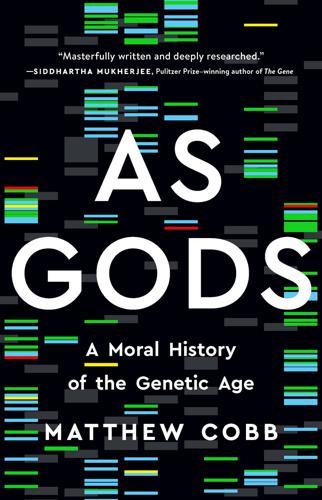
As Gods: A Moral History of the Genetic Age
by
Matthew Cobb
Published 15 Nov 2022
As Pollack put it a few years later: ‘typical of the man, he didn’t just give me a brush-off; he used judo on the whole argument – just flipped the whole thing over and instead of being the guy who is the problem, he became the guy who is ostensibly the solution’.18 Berg’s judo flip was even more astute than appeared – having convinced Pollack that a conference would be a good idea, Berg deftly handed the tedious task of organising it to Pollack and two colleagues. The conference, ‘Biohazards in Biological Research’, involved around 100 delegates (all but two of them from the United States) and took place in January 1973 at the Asilomar Conference Centre, a location habitually used by Berg’s department for its academic retreats. Situated on the California coast just north of Santa Monica, the Asilomar centre is surrounded by pine trees, with the waves of the Pacific crashing on the beach a few hundred metres away. The key word in the title of the meeting – biohazards – was relatively new.
…
The NIH and the National Cancer Institute had begun to use the term in the mid-1960s to describe various viruses and bacteria, and in 1966, Charles Baldwin of Dow Chemical designed a warning symbol to denote containment facilities that contained such hazardous biological material. Its fluorescent orange-red circles – redolent of the three rays of the radiation symbol – soon became widespread.19 Biohazard symbol, as designed in 1966 by Charles Baldwin of Dow Chemical. The 1973 Asilomar conference focused on procedures for dealing with existing threats, in particular SV40. The issue that had so preoccupied Pollack – the introduction of tumour virus DNA into a widespread bacterium – was not mentioned. Indeed, there was no discussion of genetic engineering at all. At various points the discussion revealed the dangerous practices that existed in many laboratories – one researcher sheepishly admitted to having accidentally swallowed SV40 while mouth pipetting (a largely abandoned procedure that involves sucking up material into a pipette, hoping you do not suck too hard and that the aerosol components are not inhaled, or even worse, the liquid is not ingested, which inevitably happens sometimes).20 Some attendees felt that the whole biohazards business was a fuss about nothing.
…
What became known as ‘the Berg letter’ called on scientists around the world to defer all experiments involving genetic engineering ‘until the potential hazards of such recombinant DNA molecules have been better evaluated or until adequate methods are developed for preventing their spread’.1 For the first time in history, scientists had publicly decided to stop doing a particular kind of experiment until they were sure it was safe. This letter represented the decisive step on the road to one of the most intensively studied moments in twentieth-century biology – the Asilomar conference of February 1975 and the global debate about the regulation of recombinant DNA research that it ignited. Scores of books, PhD theses, articles and memoirs have been published about the period, which saw protests, furious rows, complex legal regulation and eye-popping financial speculation about potential riches from the patented products of genetic engineering.
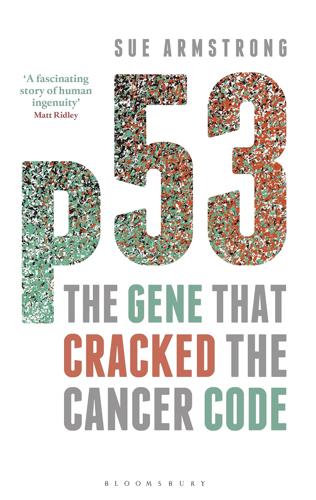
P53: The Gene That Cracked the Cancer Code
by
Sue Armstrong
Published 20 Nov 2014
The following year the intense soul-searching among scientists, and the equally volatile debate that had begun in the world’s media, culminated in an international conference held at the Asilomar Center, a magnificent old lodge built of warm local wood and stone overlooking the Pacific near Monterey, California. Writing for Science magazine in 2000 on the 25th anniversary of the Asilomar Conference, journalist Marcia Barinaga called it ‘the Woodstock of molecular biology: a defining moment for a generation, an unforgettable experience, a milestone in the history of science and society’. Looking back across the years, David Baltimore, who won the Nobel Prize for Medicine in 1975 for his work with viruses and was one of the organisers of the conference, said, ‘Recombinant DNA was the most monumental power ever handed to us.
…
What eased the process was the decision to divide the types of experiments using recombinant DNA into several categories – depending on whether they involved organisms or fragments of DNA known to cause disease or pose other dangers, or used materials considered harmless – and making recommendations about how to proceed under different scenarios. These included taking measures to disarm living organisms used in experiments so that they could not interbreed nor survive outside of tissue cultures; and adopting specific safety measures in the design of labs. It fell to national governments to turn the recommendations of the Asilomar Conference into useable guidelines, and by 1976 scientists were able to resume their experiments with recombinant DNA, more or less reassured that they were not about to unleash Frankenstein species upon the world. HOW ONCOGENES TURN NASTY A question burning in the minds of researchers ever since Bishop and Varmus’s discovery of the Src oncogene in chickens and other birds was: could these cellular oncogenes cause cancer without first being captured by a virus?
…
Today, cloning is a relatively simple process that can be accomplished in a day or two, but in the early 1980s it was a big challenge taking months – even years – and was made especially difficult by the fact that it involved working with recombinant DNA. This technology remained somewhat controversial for years after the Asilomar Conference, which, you will remember, brought concerned scientists together in a California hide-out to confront the spectre of Frankenstein species. It’s worth pausing at this point to ponder what it is that molecular biologists – working away with their pipettes and dishes, test tubes, gels and incubators – are handling.

Life After Google: The Fall of Big Data and the Rise of the Blockchain Economy
by
George Gilder
Published 16 Jul 2018
You cannot grasp the intricacies of computer science with a model of the world consisting of fluctuating particles any more than a model of fluctuating particles can illuminate the brain. Knowledge of every quark and electron in a computer tells you virtually nothing of what the computer is doing. To know that, you have to address the source code, and the source code is the ground state where human interpretation is imparted. The 2017 Asilomar conference called to mind a conference held at the same place in February 1975, at which scientists warned about the future of technology—in that case, genetic engineering. They feared that experiments enabling molecular biologists to splice DNA from two different organisms, producing novel recombinant DNA molecules and chimeras, would threaten all human life.
…
They feared that experiments enabling molecular biologists to splice DNA from two different organisms, producing novel recombinant DNA molecules and chimeras, would threaten all human life. Within a decade, so the attendees prophesied, “scientists will be able to create new species and carry out the equivalent of 10 billion years of evolution in one year.” More than four decades later, the hopes and fears of the 1975 Asilomar conference are nowhere near to coming true. The roots of nearly a half-century of frustration reach back to the meeting in Königsberg in 1930, where von Neumann met Gödel and launched the computer age by showing that determinist mathematics could not produce creative consciousness. Von Neumann stepped forward to become the oracle of the age we are now consummating.
…
Reflecting on the 1975 conference, the eminent chemist-biologist Michael Denton concludes, “The actual achievements of genetic engineering are rather more mundane . . . , a relatively trivial tinkering rather than genuine engineering, analogous to tuning a car engine rather than redesigning it, an exploitation of the already existing potential for variation which is built into all living systems. . . . ” Thousands of transgenic plants have been developed with results “far from the creation or radical reconstruction of a living organism.”14 All that the first Asilomar conference managed to achieve was triggering an obtuse paranoia about “genetically modified organisms” that hinders agricultural progress around the world. That danger of paranoid politics is the chief peril that all the Deep Learners at the new Asilomar should have recognized. Among the Deep Learners and Google brains at the AI Asilomar was Vitalik Buterin, a twenty-three-year-old college dropout with the same etiolated, wide-eared, boy-genius look that characterized Gödel and Turing.

When Computers Can Think: The Artificial Intelligence Singularity
by
Anthony Berglas
,
William Black
,
Samantha Thalind
,
Max Scratchmann
and
Michelle Estes
Published 28 Feb 2015
It would take an extraordinary act of political will to suddenly turn that around and deliberately stop producing new hardware. Particularly if there was any doubt that competitive nations were adhering to any such ban. Realistically it would require a widely demonstrated disaster involving a hyperintelligent machine. By that stage it would be far too late. Asilomar conference A good example of political cooperation was the Asilomar Conference in 1975, in which researchers and lawyers drew up voluntary guidelines on recombinant DNA research. There were widespread concerns that this very new technology could accidentally produce super-microbes that would be impossible to control in the wider environment.
…
Defeating natural selection 17. Wishful thinking 18. Whole brain emulation 19. Chain of AGIs 20. Running away 21. Just do not build an AGI 8. Political Will 1. Atom bombs 2. Iran's atomic ambitions 3. Stuxnet 4. Glass houses 5. Zero day exploits 6. Practicalities of abstinence 7. Restrict computer hardware 8. Asilomar conference 9. Patent trolls 10. Does it really matter? 9. Conclusion 1. Geological history 2. History of science 3. Natural selection 4. Human instincts 5. Intelligence 6. AI technologies 7. Building an AGI 8. Semi-intelligent machines 9. Goals 10. Prognosis 10. Bibliography and Notes When Computers Can Think The Artificial Intelligence Singularity Anthony Berglas, Ph.D.
…
The point is made that some approaches such as neural networks and genetic algorithms are unpredictable, starting from random values which would make it difficult to guarantee goal consistency over multiple generations of self-improvement. The book discusses some potential solutions such as the research into friendly AGI by the Machine Intelligence Research Institute. It also considers analogous control for biological research resulting from the Asilomar conference. The difficulty of locking up an AGI is discussed, including Yudkowsky’s experiment. The unfriendly nature of military applications is analyzed, noting that the next war will probably be a cyber war. This book is a good wake up call. However, the book does not consider natural selection at all, and certainly not how natural selection might ultimately affect an AGI’s goals.
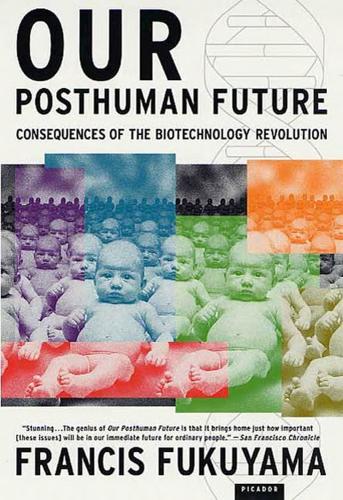
Our Posthuman Future: Consequences of the Biotechnology Revolution
by
Francis Fukuyama
Published 1 Jan 2002
In 1970 Janet Mertz, a researcher at Cold Spring Harbor Laboratory in New York, wanted to splice genes from a monkey virus into a common bacteria, E. coli, in order to better understand their function. This led to a dispute between Mertz’s supervisor, Paul Berg, and Robert Pollack over the safety of such experiments; Pollack feared they could lead to the creation of a new and highly dangerous microbe.1 The eventual result was the Asilomar Conference, held in Pacific Grove, California, in 1975, at which the leading researchers in the field met to devise controls over experiments in the burgeoning field of rDNA.2 A voluntary ban on this type of research was put into place until the risks could be better appreciated, and a Recombinant DNA Advisory Committee was established by the National Institutes of Health.
…
The first embryonic stem cell lines were cultivated by James Thompson at the University of Wisconsin, using nongovernment funding in order to comply with the ban on federally funded research that would harm embryos. Many of the participants at a workshop held on the twenty-fifth anniversary of the Asilomar Conference on rDNA concluded that while the RAC had served an important function in its day, it could no longer monitor or police the present-day biotech industry. It has no formal enforcement powers and can bring to bear only the weight of opinion within the elite scientific community. The nature of that community has changed over time as well: there are today many fewer “pure” researchers, with no ties to the biotech industry or commercial interests in certain technologies.12 This means that any new regulatory agency not only would have to have a mandate to regulate biotechnology on grounds broader than efficacy and safety but also would have to have statutory authority over all research and development, and not just research that is federally funded.
…
Affymetrix Africa, sub-Saharan African-Americans and crime age, and ability age cohorts age discrimination age distribution political implications of ageing problems with and sexuality theories of Agence Française du Médicament (France) aggression genes and sex differences in Agreement on Sanitary and Phytosanitary Measures (SPS) agricultural biotechnology regulation of agricultural biotechnology industry agriculture, history of alcohol Alexander, Richard alpha males “Alphas, Betas, Epsilons, and Gammas” altruism Alzheimer’s disease American diet American Medical Association (AMA) American Psychologist, special issue of American Revolution American South, slavery in amino acids amniocentesis androgynous median personality angry young men Animal and Plant Inspection Service animal ethology animal rights movement animals behavior of consciousness of cultural learning by pain and suffering felt by rights of social hierarchies among sympathy with traits shared with humans animal testing anthropology anti-immigrant backlash movements Antinori, Severino ape-human cross, proposed apes apperception, transcendental unity of Argentina aristocracy natural Aristotle political philosophy of Arkes, Hadley Arnhart, Larry artificial intelligence (AI) Ashkenazi Jews Asia sex-selection in Asilomar Conference assortative mating attention deficit disorder (ADD) attention deficit hyperactivity disorder (ADHD) medicalization of Austria authoritarian regimes Babylonia Bacon, Francis ballistic missiles, control of Becker, Gary behavior genetic basis of learned medicalization of self-control over behavioralism behavior genetics behavior modification Belgium bell curve debate Bentham, Jeremy benzodiazepines Berg, Paul Bernal, J.

On the Future: Prospects for Humanity
by
Martin J. Rees
Published 14 Oct 2018
But it’s worth noting that in a recent book, Inheritors of the Earth, Chris Thomas, a distinguished ecologist, argues that the spread of species can often have a positive impact in ensuring a more varied and robust ecology.5 In 1975, in the early days of recombinant DNA research, a group of leading molecular biologists met at the Asilomar Conference Grounds in Pacific Grove, California, and agreed on guidelines defining what experiments should and should not be done. This seemingly encouraging precedent has triggered several meetings, convened by national academies, to discuss recent developments in the same spirit. But today, more than forty years after the first Asilomar meeting, the research community is far more broadly international, and more influenced by commercial pressures.
…
See also planets; SETI (search for extraterrestrial intelligence) Allen, Woody, 178 ALMA radio telescope in Chile, 207 AlphaGo, 86–87, 88, 106, 191 AlphaGo Zero, 87 Alzheimer’s disease, failure of drugs for, 212 Ambrosia, life-extension start-up, 80 Anders, Bill, 120 Anderson, Philip, 176 Andromeda galaxy, 178 animal research, ethics of, 221 Anthropocene, 3, 31 antibiotic resistance, 72 antimatter, 169 Apollo programme, 120, 137, 139, 144, 145 Archimedes, 165 Arkhipov, Vasili, 18 Armstrong, Neil, 120, 138 arts and crafts, resurgence of, 98 Asilomar Conference, 74–75 assisted dying, 70–71 asteroid impact: collapse in global food supplies and, 216; existential disaster compared to, 114; on Mars, sending rock to Earth, 129; nuclear destruction compared to, 15, 18; planning for, 15–16, 43; as rare but extreme event, 15, 76 asteroids: establishing bases on, 149; travel to, 148 astrology, 11 atoms: aliens composed of, 160; complexity and, 172–74; as constituents of all materials, 165–66, 168; hard to understand, 195; number in visible universe, 182; quantum theory of, 166, 205 Bacon, Francis, 61 battery technology, 49–50, 51 Baumgartner, Felix, 149 Baxter robot, 106 Before the Beginning (Rees), 186 The Beginning of Infinity (Deutsch), 192 Bethe, Hans, 222 The Better Angels of Our Nature (Pinker), 76 Bezos, Jeff, 146 big bang: birth of universe in, 124; chain of complexity leading from, 164, 214; conditions in particle accelerator and, 111; intelligent aliens’ understanding of, 160; physical laws as a given in, 197–98; possibly not the only one, 181, 183, 184–85 (see also multiverse) Bill & Melinda Gates Foundation, 224 biodiversity: loss of, 32–33, 66; our stewardship of, 35 bio error, 73, 75, 77–78 biofuels, 32, 52 biohacking, 75, 78, 106 biotech: benefits and vulnerabilities of, 5, 6; concerns about ethics of, 73–75; concerns about safety of, 73, 74, 75, 76, 116, 218; responsible innovation in, 218, 225; threat of catastrophe due to, 76, 109–10; unpredictable consequences of, 63.

Physics of the Future: How Science Will Shape Human Destiny and Our Daily Lives by the Year 2100
by
Michio Kaku
Published 15 Mar 2011
If one reads the headlines today, it seems as if the question is already settled: the human race is about to be rapidly overtaken by our own creation. THE END OF HUMANITY? The headline in the New York Times said it all: “Scientists Worry Machines May Outsmart Man.” The world’s top leaders in artificial intelligence (AI) had gathered at the Asilomar conference in California in 2009 to solemnly discuss what happens when the machines finally take over. As in a scene from a Hollywood movie, delegates asked probing questions, such as, What happens if a robot becomes as intelligent as your spouse? As compelling evidence of this robotic revolution, people pointed to the Predator drone, a pilotless robot plane that is now targeting terrorists with deadly accuracy in Afghanistan and Pakistan; cars that can drive themselves; and ASIMO, the world’s most advanced robot that can walk, run, climb stairs, dance, and even serve coffee.
…
Eric Horvitz of Microsoft, an organizer of the conference, noting the excitement surging through the conference, said, “Technologists are providing almost religious visions, and their ideas are resonating in some ways with the same idea of the Rapture.” (The Rapture is when true believers ascend to heaven at the Second Coming. The critics dubbed the spirit of the Asilomar conference “the rapture of the nerds.”) That same summer, the movies dominating the silver screen seemed to amplify this apocalyptic picture. In Terminator Salvation, a ragtag band of humans battle huge mechanical behemoths that have taken over the earth. In Transformers: Revenge of the Fallen, futuristic robots from space use humans as pawns and the earth as a battleground for their interstellar wars.
…
And the cars that drive themselves are not making independent decisions as they scan the horizon and turn the steering wheel; they are following a GPS map stored in their memory. So the nightmare of fully autonomous, conscious, and murderous robots is still in the distant future. Not surprisingly, although the media hyped some of the more sensational predictions made at the Asilomar conference, most of the working scientists doing the day-to-day research in artificial intelligence were much more reserved and cautious. When asked when the machines will become as smart as us, the scientists had a surprising variety of answers, ranging from 20 to 1,000 years. So we have to differentiate between two types of robots.
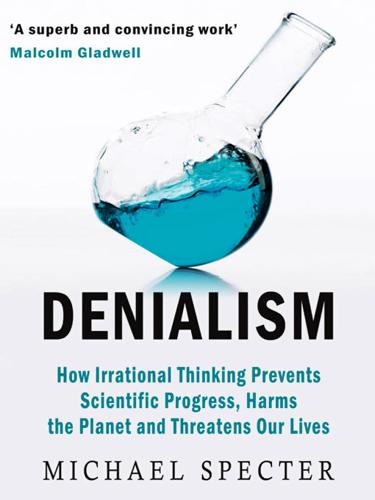
Denialism: How Irrational Thinking Hinders Scientific Progress, Harms the Planet, and Threatens Our Lives
by
Michael Specter
Published 14 Apr 2009
Early in 2009, the results of a California Academy of Sciences poll that was conducted throughout the nation revealed that only 53 percent of American adults know how long it takes for the earth to revolve around the sun, and a slightly larger number—59 percent—are aware that dinosaurs and humans never lived at the same time. Synthetic biologists will have to overcome this ignorance and the denialism it breeds. To begin with, why not convene a new, more comprehensive version of the Asilomar Conference, tailored to the digital age and broadcast to all Americans? It wouldn’t solve every problem or answer every question—and we would need many conversations, not one. But I can think of no better way for President Obama to begin to return science to its rightful place in our society. And he ought to lead that conversation through digital town meetings that address both the prospects and perils of this new discipline.
…
See organic foods AIDS activism AIDS deniers AIDS epidemic AIDS virus albuterol Aleve (naproxen) alternative medicines and antioxidents and Briggs CAM dangers of deregulation of and food additives and food labeling and health care and HIV/AIDS homeopathy and nutrition and placebo effect and snake oil and supplements and Weil Alzheimer’s disease amalgam protestors American Association for the Advancement of Science American Medical Association (AMA) American Museum of Natural History, New York American Neurological Association, Eugenical Sterilization Ames, Bruce N. amorphadiene Amyris Biotechnologies anthrax attacks (2002) antibiotics antioxidents APOE protein Apollo 13 mission APP (amyloid precursor protein) APPROVe study Armstrong, Neil artemisinin arthritis, and Vioxx ashwagandha Asilomar Conference, California (1975) aspirin asthma: and genetics in Hispanics AstraZeneca atomic bomb Australasian Journal of Bone and Joint Medicine authority, questioning autism: advocacy groups on anecdotal evidence on blame sought in cases of definitions of developmental disorders in and fear genetic research on litigation-driven hypotheses on research funding on rise in cases of and special education and state aid symptoms similar to mercury poisoning and vaccines avian influenza ayurvedic medicine Bacon, Francis Baltimore, David BASF, and canola Benedetti, Fabrizio Berg, Paul Bextra Big Oil Big Pharma Big Tobacco Bill and Melinda Gates Foundation BioBricks biochemistry Biodesic biofuels biotech games biotechnology: birth of and organic food risks of and world hunger bioterrorism bird flu birth control pills, deaths from Blair, Cherie Blair, Tony Blake, William Blue Heron Borlaug, Norman Borloo, Jean-Louis Briggs, Josephine Bromley.

Our Final Invention: Artificial Intelligence and the End of the Human Era
by
James Barrat
Published 30 Sep 2013
In 1975 scientists involved in DNA research halted lab work, and convened 140 biologists, lawyers, physicians, and press at the Asilomar Conference Center near Monterey, California. The scientists at Asilomar created rules for conducting DNA-related research, most critically, an agreement to work only with bacteria that couldn’t survive outside the laboratory. Researchers resumed work, adhering to the guidelines, and consequently tests for inherited diseases and gene therapy treatment are today routine. In 2010, 10 percent of the world’s cropland was planted with genetically modified crops. The Asilomar Conference is seen as a victory for the scientific community, and for an open dialogue with a concerned public.
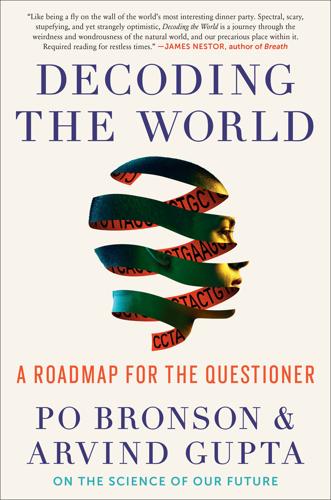
Decoding the World: A Roadmap for the Questioner
by
Po Bronson
Published 14 Jul 2020
His colleagues urged him to pause his work and convene a conference to discuss it. Berg listened to his peers. The now-legendary Asilomar Conference was held in Monterey, California, in February 1975. One hundred forty people showed up, most of them scientists, but also lawyers and ethicists. Biohazard principles were established. Risk-assessment protocols were implemented, and risk-containment strategies were endorsed. The following year, Genentech was founded to usher in the era of recombinant genetic engineering. Berg would go on to share the Nobel Prize in 1980. The Asilomar Conference happened shortly after President Richard Nixon resigned because of the Watergate scandal.

Genius Makers: The Mavericks Who Brought A. I. To Google, Facebook, and the World
by
Cade Metz
Published 15 Mar 2021
Then he took it to extremes. The Future of Life Institute was less than a year old in the fall of 2014 when it invited this growing community to a private summit in Puerto Rico. Led by an MIT cosmologist and physicist named Max Tegmark, it aimed to create a meeting of the minds along the lines of the Asilomar conference, a seminal 1975 gathering where the world’s leading geneticists discussed whether their work—gene editing—would end up destroying humanity. The invitation the institute sent included two photos: one showing the beach in San Juan, the other showing some poor soul shoveling through a snowdrift that had buried a Volkswagen Beetle somewhere in colder climes (meaning: “At the beginning of January, you will be much happier in Puerto Rico”).
…
“If there is ever to be something approaching absolute power”: Ibid. when it invited this growing community to a private summit: Max Tegmark, Life 3.0: Being Human in the Age of Artificial Intelligence (New York: Random House, 2017). it aimed to create a meeting of the minds along the lines of the Asilomar conference: Ibid. Musk took the stage to discuss the threat of an intelligence explosion: Robert McMillan, “AI Has Arrived, and That Really Worries the World’s Brightest Minds,” Wired, January 16, 2015, https://www.wired.com/2015/01/ai-arrived-really-worries-worlds-brightest-minds/. That, he said, was the big risk: Ibid.

The Optimist: Sam Altman, OpenAI, and the Race to Invent the Future
by
Keach Hagey
Published 19 May 2025
Not long after Open Philanthropy was founded, the energy of the EA movement began to shift from terrestrial issues like bail reform and deworming pills to the more expansive effort to save the lives of all the people who could be born in the future. This meant focusing on problems with a small, but not zero, chance of wiping out humanity, such as nuclear war, global pandemics, or AI run amok. Open Philanthropy would follow suit. In March 2017, two months after the Asilomar conference, the foundation donated $30 million to OpenAI, and Holden Karnofsky joined OpenAI’s board. The announcement came with a disclosure that Dario Amodei and Paul Christiano, who had by that point come around to joining OpenAI as researchers, “are both technical advisors to Open Philanthropy and live in the same house as Holden.
…
With the new structure came a new, bigger board, which included Tasha McCauley, Reid Hoffman, Adam D’Angelo (the CEO of Quora), and Shivon Zilis (an executive at Musk’s Neuralink). McCauley had joined the board in November 2018, after Holden Karnofsky, who ran in similar EA circles, had recommended her—in part because McCauley had already met Altman at the Asilomar conference. McCauley and Altman now had several conversations, and then she went through a formal interview process, during which she answered questions from employees about her views on AI safety. D’Angelo was a well-known entity in Silicon Valley, having worked as CTO of Facebook, and was friendly with Brockman.
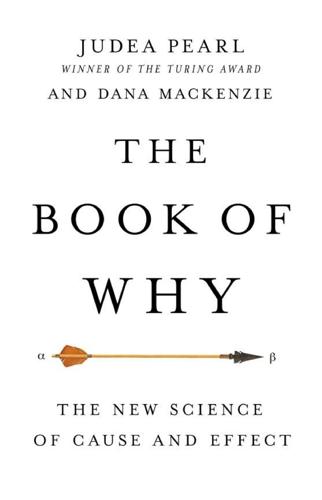
The Book of Why: The New Science of Cause and Effect
by
Judea Pearl
and
Dana Mackenzie
Published 1 Mar 2018
Since World War II, a good example of scientists pulling back from the feasible was the 1975 Asilomar conference on DNA recombination, a new technology seen by the media in somewhat apocalyptic terms. The scientists working in the field managed to come to a consensus on good-sense safety practices, and the agreement they reached then has held up well over the ensuing four decades. Recombinant DNA is now a common, mature technology. In 2017, the Future of Life Institute convened a similar Asilomar conference on artificial intelligence and agreed on a set of twenty-three principles for future research in “beneficial AI.”

Architects of Intelligence
by
Martin Ford
Published 16 Nov 2018
MARTIN FORD: There’s a step-change, though, between real risks and existential risks. RAY KURZWEIL: Well, we’ve also done reasonably well with existential risks from information technology. Forty years ago, a group of visionary scientists saw both the promise and the peril of biotechnology, neither of which was close at hand at the time, and they held the first Asilomar Conference on biotechnology ethics. These ethical standards and strategies have been updated on a regular basis. That has worked very well. The number of people who have been harmed by intentional or accidental abuse or problems with biotechnology has been close to zero. We’re now beginning to get the profound benefit that I alluded to, and that’s going to become a flood over the next decade.
…
That’s a success for this approach of comprehensive ethical standards, and technical strategies on how to keep the technology safe, and much of that is now baked into law. That doesn’t mean we can cross danger from biotechnology off our list of concerns; we keep coming up with more powerful technologies like CRISPR and we have to keep reinventing the standards. We had our first AI ethics Asilomar conference about 18 months ago where we came up with a set of ethical standards. I think they need further development, but it’s an overall approach that can work. We have to give it a high priority. MARTIN FORD: The concern that’s really getting a lot of attention right now is what’s called the control problem or the alignment problem, where a superintelligence might not have goals that are aligned with what’s best for humanity.
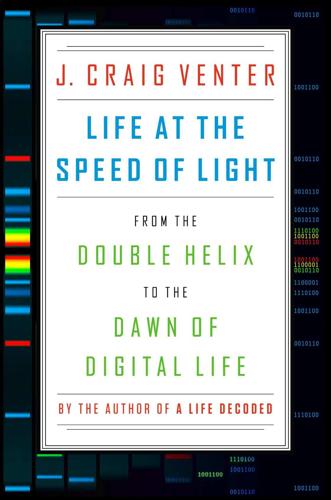
Life at the Speed of Light: From the Double Helix to the Dawn of Digital Life
by
J. Craig Venter
Published 16 Oct 2013
The first transgenic mammal was created in 1974 by Rudolf Jaenisch and Beatrice Mintz, who inserted foreign DNA into mouse embryos.14 Because of the growing public unease over the potential dangers of such experimentation, Berg played an active role in debating to what degree such studies should be constrained and limited. In 1974 a group of American scientists recommended a moratorium on this research. Voluntary guidelines were drawn up at a highly influential meeting organized the following year by Berg at the Asilomar Conference Grounds, in Pacific Grove, California. The fear of some was that recombinant organisms might have unexpected consequences, such as causing illness or death, and that they might escape the laboratory and spread. This concern was balanced by arguments in support of the potential of genetic engineering, notably those of Joshua Lederberg, a Stanford professor and Nobel laureate.15 In 1976 the National Institutes of Health issued its own guidelines for the safe conduct of recombinant-DNA research, the repercussions of which are still being felt in the ongoing debates about genetically altered crops and the more recent discussion about the use and misuse of research on the genetics of influenza.

12 Bytes: How We Got Here. Where We Might Go Next
by
Jeanette Winterson
Published 15 Mar 2021
* * * Musk was part of the 2017 Future of Life Institute conference that aimed to build a set of aims for current AI use – and, later, AGI. The Boston-based Future of Life Institute was set up by Max Tegmark, a professor of Physics at MIT and author of several books about AI, and Jaan Tallinn – founding engineer of Skype. Over a weekend at the Asilomar conference centre in California, 100 or so scientists, lawyers, thinkers, economists, tech gurus and computer scientists put together 23 principles to guide AI development. These are a significant advancement on Isaac Asimov’s famous Three Laws of Robotics, that first appeared in his 1942 short story ‘Runaround’: 1) A robot may not injure a human being or, through inaction, allow a human being to come to harm. 2) A robot must obey the orders given it by human beings except where such orders would conflict with the First Law. 3) A robot must protect its own existence as long as such protection does not conflict with the First or Second Laws.

The Singularity Is Near: When Humans Transcend Biology
by
Ray Kurzweil
Published 14 Jul 2005
Gene engineering, however, has the potential to bypass these evolutionary protections by suddenly introducing new pathogens for which we have no protection, natural or technological. The prospect of adding genes for deadly toxins to easily transmitted, common viruses such as the common cold and flu introduced another possible existential-risk scenario. It was this prospect that led to the Asilomar conference to consider how to deal with such a threat and the subsequent drafting of a set of safety and ethics guidelines. Although these guidelines have worked thus far, the underlying technologies for genetic manipulation are growing rapidly in sophistication. In 2003 the world struggled, successfully, with the SARS virus.
…
As I mentioned above, the Foresight Institute, as one example, has devised a set of ethical standards and strategies for assuring the development of safe nanotechnology, based on guidelines for biotechnology.43 When gene-splicing began in 1975 two biologists, Maxine Singer and Paul Berg, suggested a moratorium on the technology until safety concerns could be addressed. It seemed apparent that there was substantial risk if genes for poisons were introduced into pathogens, such as the common cold, that spread easily. After a ten-month moratorium guidelines were agreed to at the Asilomar conference, which included provisions for physical and biological containment, bans on particular types of experiments, and other stipulations. These biotechnology guidelines have been strictly followed, and there have not been reported accidents in the thirty-year history of the field. More recently, the organization representing the world's organ transplantation surgeons has adopted a moratorium on the transplantation of vascularized animal organs into humans.
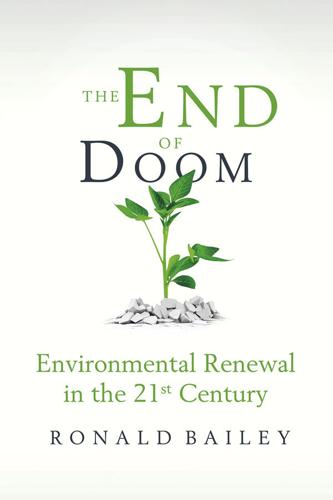
The End of Doom: Environmental Renewal in the Twenty-First Century
by
Ronald Bailey
Published 20 Jul 2015
There is no little irony that today Cambridge promotes itself as “one of the world’s major biotech centers.” Needless to say, more than forty years after gene splicing was invented, no plagues, much less epidemics of infectious cancer, have emerged from the world’s biotech labs. In the context of this furor, some 140 molecular biologists convened in 1975 at the Asilomar Conference Grounds in Pacific Grove, California, to draft guidelines for conducting gene-splicing experiments. They self-consciously thought that they were avoiding what they saw as the mistakes made a generation earlier by Manhattan Project nuclear physicists when they unleashed the power of the atom.

Machines of Loving Grace: The Quest for Common Ground Between Humans and Robots
by
John Markoff
Published 24 Aug 2015
In other fields, certain issues have forced scientists and technologists to consider the potential consequences of their work, and many of those scientists acted to protect humanity. In February of 1975, for example, Nobel laureate Paul Berg encouraged the elite of the then new field of biotechnology to meet at the Asilomar Conference Grounds in Pacific Grove, California. At the time, recombinant DNA—inserting new genes into the DNA of living organisms—was a fledgling development. It presented both the promise for dramatic advances in medicine, agriculture, and new materials and the horrifying possibility that scientists could unintentionally bring about the end of humanity by engineering a synthetic plague.
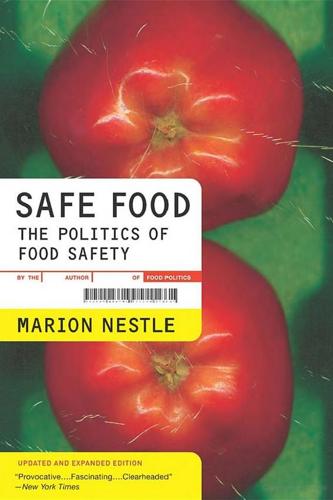
Safe Food: The Politics of Food Safety
by
Marion Nestle
Published 1 Jan 2010
See USDA Agrobacteria, 301, 331n35 Alcohol, 35, 56 Alexander, Stuart, 111 Allergic reactions, 2, 3, 4–5, 9–11, 13, 14, 16–17, 19–20, 25, 142, 172–76, 192, 208, 241, 243 Alliance for Bio-Integrity, 244 Alliance for Food Security, 269 Alto Dairy, 89 American Cancer Society, 29 American Cheese Society, 128, 323n38 American Corn Growers Association, 224, 245 American Council on Science and Health (ACSH), 24, 123 American Dietetic Association, 120, 165 American Federation of Government Employees, 108 American Meat Institute, 71, 76, 77, 81, 82, 83, 91, 100, 124, 134, 254, 295 American Medical Association, 206 American Public Health Association (APHA), 66–67, 76, 80–81, 106, 271–72 American Seed Trade Association, 4 American Veterinary Medical Association, 295 Amino acids, 9, 147, 174, 183–84, 185, 196, 198, 300, 301, 331n35, 343n5 See also Tryptophan Anemia, 160 Animal and Plant Health Inspection Service (APHIS), 56, 58 Animal feed, 3, 4, 5, 6, 11, 43, 47, 56, 113, 146, 147, 151, 174, 175, 251–55, 288 Animal rights, 200, 229 Animals as carriers of pathogens, 29, 34, 37, 42, 43, 44–48, 52, 62, 250–57, 342n4 cattle, 25, 28, 40, 41, 42, 44–45 (See also Cattle, infected) poultry, 34, 37, 46, 54, 57–59, 95, 115, 134 Anthrax, 25, 33, 126, 248, 249, 250, 257–60, 265, 301, 344n23 Antibiotics, 176–77 farm animals treated with, 43, 46–48, 113, 176, 177, 179, 199, 259, 295 and protection against anthrax, 258–60 resistance to and genetically modified products, 142, 176–79, 192, 221, 229, 238, 243 microbial, 19, 41, 43, 45–47, 118, 127–28, 176, 199, 259, 265, 279, 294–95, 301 Antitrust laws, 232, 244 APHA v. Butz, 66–67, 76, 80–81, 106 Archer Daniels Midland, 8 Argentina, 150, 237, 238, 239, 240 Armour company, 90 Army, U.S., 122 Arsenic, 136 Arthritis, 40 Artisanal cheese, 128 Asilomar conference on biotechnology, 171 AstraZeneca, 159–60 Australia, 109, 238, 239 Austria, 238, 278 Aventis CropScience, 2–8, 11–14, 16, 139, 234, 260 Azteca Milling, 6, 8 Bacillus thuringiensis (Bt), 3, 6, 151, 180–81, 183, 196, 207, 216–19, 220, 301 Bacteria genetically modified, 139 mutations in, 184 Bacteria, foodborne, 27, 28, 35, 36, 37, 40–42, 57–59 antibiotic-resistant, 19, 41, 45–47, 118, 127–28, 176–77, 199 and safe handling labels, 66–67, 76–77, 82, 83, 90 spread by processing practices, 49, 50, 117–20 spread by production practices, 43, 44–45 and warning labels, 66–67, 98–99 See also Microbes, foodborne; names of bacterial species Bayer, 5, 259, 260 Bayer CropScience, 260 Beachy, Roger, 151, 326n13 Beef ground, 29, 40, 45, 77, 78, 81–84, 97, 101, 102, 104, 125, 283, 284, 286, 288–90, 294–95 imported, 114 irradiated, 122–26, 136 nonintact, 103 rare, 29, 35 See also Hamburger Beef America, 101 Beef industry accountability of, 83, 124, 129 and cattle diseases, 44–45, 135, 187, 249, 250–57, 289 government alliance with, 62, 63, 65, 70–71, 74, 84, 253, 255 government influenced by, 31, 46, 76, 77, 79–80, 91–92, 94 through lobbying, 62, 64, 65, 71, 79, 80, 91, 118 government inspection of, 50–54, 59, 65–66, 70, 71–72, 73, 79, 80–84, 86, 87, 100, 101, 107–11, 134, 136, 257 government regulation of, 62, 63, 65–67, 74–76, 80–84, 283 and fragmentation of regulatory authority, 55, 56, 57, 58, 59, 70 by HACCP, 63, 67–71, 68, 69, 75, 75, 76, 81, 84–85, 86–92, 94–99, 104–10, 112 largest producer in, 79, 101 and recalls of food products, 53, 87, 100–102, 121, 123, 288–90, 294–95 and resistance to government regulation, 28, 63, 65, 70, 71, 72, 76–77, 82–84, 86, 92, 94, 97, 103–7, 110–12, 120, 295 responsibility denied by, 63, 73, 75–76, 102, 103, 110, 112, 124, 136 and safe handling labels, 66–67, 76–78, 78 and science-based approach, 63 See also Meat processing Beef Packers, Inc., 294 Beets, 278 Belgium, 3, 4, 7, 47 Ben & Jerry’s ice cream, 198, 200, 203–4, 204 Berkeley.
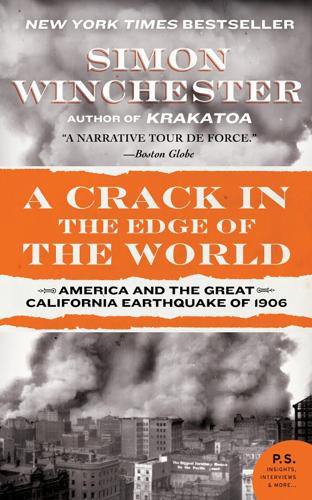
A Crack in the Edge of the World
by
Simon Winchester
Published 9 Oct 2006
Eldridge Moores, one of the great discoverers of the processes that led to the making of the American West, is shown here in suitably heroic pose, with a sequence of ophiolites, the key to the mystery, spread out before him. to the structural peculiarities there that led to all the San Francisco earthquakes, culminating in the disastrous event of 1906. Professor Moores remembers the moment of his realization only too well. It was 20 December 1969, and he was in Pacific Grove, California, at the Asilomar Conference Center. He was listening, fascinated, halfway through a session of the second of the annual Penrose Conferences that the Geological Society of America now holds to ruminate on the most important new developments in earth science.* At this legendary gathering ‘the full import of the plate tectonic revolution burst on the participants like a dam failure’, he later wrote.

The Power Elite
by
C. Wright Mills
and
Alan Wolfe
Published 1 Jan 1956
See Walter Lippmann, Public Opinion (New York: Macmillan, 1922), which is still the best account of this aspect of the media. Cf. especially pp. 1–25 and 59–121. 8. Cf. Gerth and Mills, Character and Social Structure (New York: Harcourt, Brace, 1953), pp. 84 ff. 9. J. Truslow Adams, The Epic of America (Boston: Little, Brown, 1931) p. 360. 10. Cf. Mills, ‘Work Milieu and Social Structure,’ a speech to ‘The Asilomar Conference’ of the Mental Health Society of Northern California, March 1954, reprinted in their bulletin, People At Work: A Symposium, pp. 20 ff. 11. A. E. Bestor, Educational Wastelands (Urbana, Ill.: University of Illinois, 1953), p. 7. Cf. also p. 80. 14. The Conservative Mood 1. Cf. Karl Mannheim, Essays on Sociology and Social Psychology (Edited and translated by Paul Kecskemeti) (New York: Oxford University Press, 1953), Chapter II: ‘Conservative Thought,’ pp. 74 ff. 2.

Global Catastrophic Risks
by
Nick Bostrom
and
Milan M. Cirkovic
Published 2 Jul 2008
The Dartmouth Proposal makes no mention ofbuilding nicejgoodjbenevolent AI. Questions of safety are not mentioned even for the purpose of dismissing them. This, even in that bright summer, when human-level AI seemed just around the comer. The Dartmouth Proposal was written in 1955, before the Asilomar conference on biotechnology, thalidomide babies, Chemobyl, or 1 1 September. If today the idea of artificial intelligence were proposed for the first time, then someone would demand to know what specifically was being done to manage the risks. I am not saying whether this is a good change or a bad change in our culture.

Coastal California
by
Lonely Planet
This historic 18-hole municipal course, where black-tailed deer freely range, has impressive sea views, and it’s a lot easier (not to mention cheaper) to book a tee time. Sleeping B&Bs have taken over many stately Victorian homes around downtown and by the beach. Motels cluster at the peninsula’s western end, off Lighthouse and Asilomar Aves. Asilomar Conference Grounds LODGE $$ ( 831-372-8016, 888-635-5310; www.visitasilomar.com; 800 Asilomar Ave, Pacific Grove; r incl breakfast $115-175; ) Sprawling over more than 100 acres of sand dunes and pine forests, this state-park lodge is a find. Skip ho-hum motel rooms for historic houses designed by early-20th-century architect Julia Morgan (of Hearst Castle fame) – the thin-walled, hardwood-floored rooms may be small, but share a sociable fireplace lounge.

Western USA
by
Lonely Planet
InterContinental–Clement HOTEL $$$ ( 831-375-4500; www.intercontinental.com; 750 Cannery Row; r $200-455; ) Like an upscale version of a millionaire’s seaside clapboard house, this sparkling resort presides over Cannery Row. For utmost luxury, book an ocean-view suite with a balcony and private fireplace, then breakfast in bayfront C Restaurant. Parking $18. Asilomar Conference Grounds LODGE $$ ( 831-372-8016; www.visitasilomar.com; 800 Asilomar Ave, Pacific Grove; r incl breakfast $115-175; ) Coastal state-park lodge has buildings designed by architect Julia Morgan, of Hearst Castle fame. Historic rooms are small and thin-walled, but charming nonetheless. The lodge’s fireside rec room has ping-pong and pool tables.
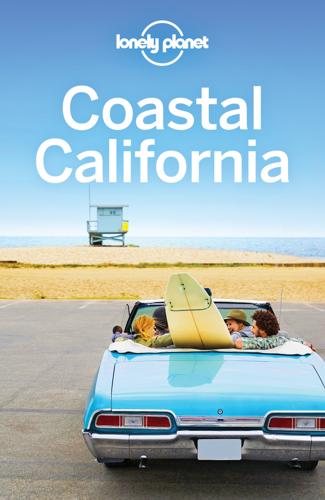
Coastal California Travel Guide
by
Lonely Planet
This historic 18-hole municipal course, where deer freely range, has impressive sea views, and it’s a lot easier (not to mention cheaper) to book a tee time here. 4Sleeping Antique-filled B&Bs have taken over many stately Victorian homes around downtown Pacific Grove and by the beach. Motels cluster at the peninsula’s western end, off Lighthouse and Asilomar Aves. Asilomar Conference GroundsLODGE$$ ( MAP GOOGLE MAP ; %831-372-8016; www.visitasilomar.com; 800 Asilomar Ave; r from $188; iWs) This state-park lodge sprawls by sand dunes in pine forest. Skip ho-hum motel rooms and opt for historic houses designed by early-20th-century architect Julia Morgan (of Hearst Castle fame) – the thin-walled, hardwood-floored rooms may be small, but they share a fireplace lounge.

Northern California Travel Guide
by
Lonely Planet
This historic 18-hole municipal course, where deer freely range, has impressive sea views, and it’s a lot easier (not to mention cheaper) to book a tee time here. 4Sleeping Antique-filled B&Bs have taken over many stately Victorian homes around downtown Pacific Grove and by the beach. Motels cluster at the peninsula’s western end, off Lighthouse and Asilomar Aves. Asilomar Conference GroundsLODGE$$ ( MAP GOOGLE MAP ; %831-372-8016; www.visitasilomar.com; 800 Asilomar Ave; r from $188; iWs) This state-park lodge sprawls by sand dunes in pine forest. Skip ho-hum motel rooms and opt for historic houses designed by early-20th-century architect Julia Morgan (of Hearst Castle fame) – the thin-walled, hardwood-floored rooms may be small, but they share a fireplace lounge.
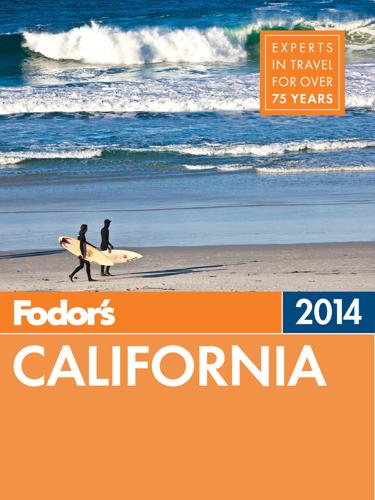
Fodor's California 2014
by
Fodor's
Published 5 Nov 2013
AMERICAN | Grilled marinated rabbit, roasted half chicken, filet mignon, and other meats are the focus at this café, which serves hearty European-inspired food in a casual, open-kitchen setting. | Average main: $20 | 1199 Forest Ave. | 93950 | 831/655–0324 | www.tastecafebistro.com | Closed Sun.–Mon. Where to Stay Asilomar Conference Grounds. RESORT | On 107 acres in a state park, Asilomar stands among evergreen woods on the edge of a wild beach. Thirteen of the 30 buildings at the former YWCA retreat were designed by Julia Morgan between 1913 and 1928. The complex mostly serves groups and conferences, and a stay here may bring back fond memories of summer camp: there are games in the social hall, campfires outside, and paved paths between the buildings.
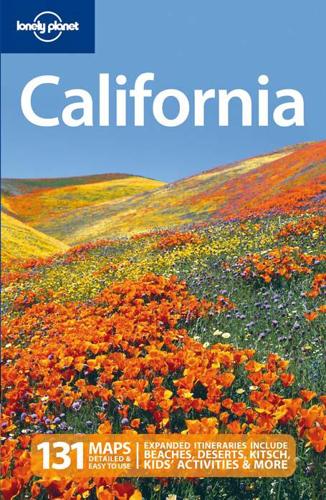
California
by
Sara Benson
Published 15 Oct 2010
With a gray whale sculpture out front, PG’s Museum of Natural History (Map; 831-648-5716; www.pgmuseum.org; 165 Forest Ave; admission free; 10am-5pm Tue-Sat; ) has old-fashioned exhibits about Big Sur, Native American tribes, sea otters, coastal bird life and butterflies. It’s often overrun by schoolkids. Sleeping Modest motels cluster at the western end of Lighthouse Ave. B&Bs have taken over many historic mansions around downtown and by the beach. Asilomar Conference Grounds (Map; 831-372-8016, 866-654-2878; www.visitasilomar.com; 800 Asilomar Ave; d $105-195; ) Sprawling over more than 100 acres of sand dunes and pine forests, this state-park conference center is a find. Skip ho-hum motel rooms for historic houses designed by early-20th-century architect Julia Morgan, where cozy, hardwood-floored rooms share a sociable fireplace lounge.

USA Travel Guide
by
Lonely, Planet
InterContinental–Clement HOTEL $$$ ( 831-375-4500; www.intercontinental.com; 750 Cannery Row; r $200-455; ) Like an upscale version of a millionaire’s seaside clapboard house, this sparkling resort presides over Cannery Row. For utmost luxury, book an ocean-view suite with a balcony and private fireplace, then breakfast in bayfront C Restaurant. Parking $18. Asilomar Conference Grounds LODGE $$ ( 831-372-8016; www.visitasilomar.com; 800 Asilomar Ave, Pacific Grove; r incl breakfast $115-175; ) Coastal state-park lodge has buildings designed by architect Julia Morgan, of Hearst Castle fame. Historic rooms are small and thin-walled, but charming nonetheless. The lodge’s fireside rec room has ping-pong and pool tables.